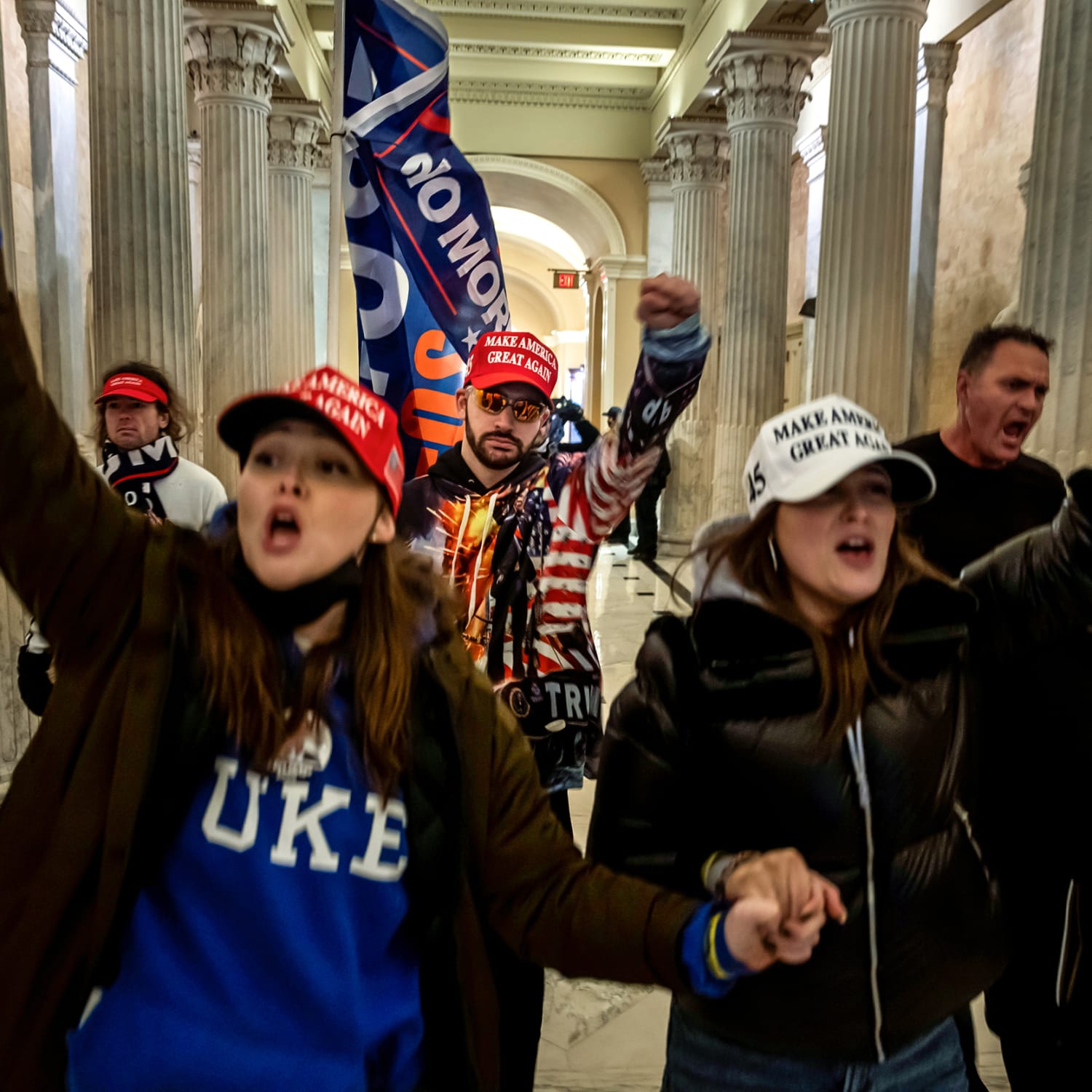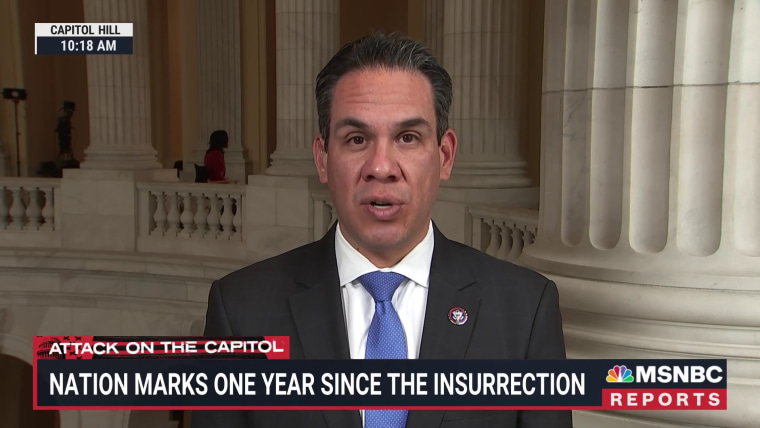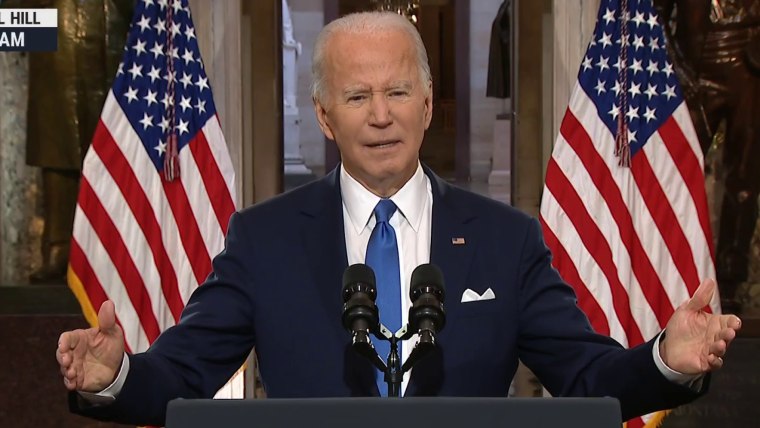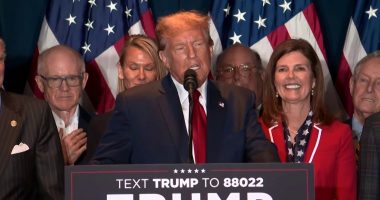Trumpism is not, and maybe never was, a revolt of the economically anxious or impoverished. A new study of the people charged in the Jan. 6 riot should, hopefully, once and for all end this myth.
The detailed look conducted by researchers at the Chicago Project on Security and Threats found a majority of suspects were not distressed farmers from mortgaged lands or laid-off workers from idled factories, but white-collar professionals and business owners. Their ranks included CEOs, a cardiovascular specialist, lawyers, a design engineer, accountants and the founder and president of a firm that tests satellites. In fact, the percentage of business owners among the people charged — 26 percent — was more than twice their percentage in the U.S. population as a whole.
Their ranks included CEOs, a cardiovascular specialist, lawyers, a design engineer, accountants and the founder and president of a firm that tests satellites.
Although many of them lost their jobs after being arrested, it seems job insecurity was not the reason most, if not all, stormed the Capitol. Only 7 percent were unemployed at the time, according to the Chicago Project’s director, Robert Pape. Pape has been hired by the Pentagon to better understand the emerging threat of American political violence.
But the reality is former President Donald Trump’s movement was always a movement of the relatively rich. This makes sense, since his policies also were mostly crafted to benefit the rich, designed in large part by a small group of New York billionaires and enabled by other wealthy donors.
Yet, the myth of Trump’s poor rabble persisted for years. The day after Trump’s election, The New York Times ran a front-page article crediting his victory to “a largely overlooked coalition of mostly blue-collar white and working-class voters.” That belief sent countless reporters on trips into opioid-ravaged, boarded-up towns of rural America to listen to “overlooked” poor whites.
But the data is much more complicated than those first assessments. Trump did not, in fact, attract more working-class whites than his Republican predecessors. As early as the Republican primaries, in March 2016, a survey found that Trump’s support was about evenly distributed between people who earned more than $100,000 per year and those making less than $50,000. “Trump gets just as much of his support from the richest Americans as he does from the poorest,” MSNBC explained.
In May 2016, FiveThirtyEight argued Trump’s supporters were considerably better off than the average American, making a median of $72,000 a year at that point. The analysis found Trump did best among very wealthy voters without college degrees, such as small-business owners.
In June 2017, The Washington Post published an analysis titled “It’s time to bust the myth: Most Trump voters were not working class.”
Yet, the perception persisted: nope — not like us!
In fact, they are us.
Pape, who has studied political violence for 30 years and runs a team of researchers at the University of Chicago, said he believes this mythology has persisted because the Trumpers are unusual, sui generis in American politics.
“Before Jan. 6, your right-wing violent extremists that the FBI arrests for violence are typically a third unemployed, often associated with prison gangs, and none are business owners or CEOs or doctors or lawyers,” he told me. “This is quite unusual for right-wing extremism as we have understood and known about it until now.”
Brynn Tannehill, a political scientist and the author of a book about the antidemocratic trend in the Republican Party, has another theory.
“From a media perspective, there’s a lot more money to be made telling the story that these Trump-voting individuals are just good, decent, ‘real’ Americans who are motivated by economic anxiety,” Tannehill said.
This is precisely what Trump said to his supporters on Jan. 6, before urging them to go to the Capitol and take their country back.
“Our country has been under siege for a long time,” he said. “You’re the real people … that built this nation.”
“Most moderates don’t want to hear what the actual data says about Trump voters because it tells a story that runs counter to their deeply held beliefs about American exceptionalism,” Tannehill said.
In fact, Tannehill argued, this kind of movement has emerged in America before — but a very long time ago.
“The American Civil War was a revolt by rich, white slave-owners who were paranoid that Lincoln would abolish slavery, when in reality Lincoln had no intention of doing so,” she pointed out.
These kinds of misperceptions have a precedent, too. In Hitler’s Europe, the Nazi Party was for a long time assumed to have emerged from the lower middle classes. In fact, the party’s strongest support came from rural Protestants, who allied themselves with a traditionalist, monarchist conservative party.
In “Origins of Totalitarianism,” Hannah Arendt described the merging of aristocrats and comfortable conservatives in Nazi Germany. “The mob was only a means to strengthen their position, to give their voices a greater resonance,” she wrote.
As antisemitism was an effective mobilizer in Nazi politics, so, to our everlasting shame, is racism one of Trumpism’s strongest motivators.
In Hitler’s Europe, the Nazi Party was for a long time assumed to have emerged from the lower middle classes.
The Chicago team investigated the origins of arrested individuals and discovered that the more rural a county was, and the more votes a county gave Trump, the less likely the county was to have sent a person to Washington on Jan. 6.
Instead, the majority came from denser population centers, and they came from counties that had lost white population share. The greater the decrease in “non-Hispanic whites,” as the researchers described, the more likely the county was to have spawned an alleged rioter.
This dovetails with research from NORC at the University of Chicago that found the once-fringe “replacement theory” — a longtime slogan of European fascists and the American Nazi Party — is becoming more mainstream in American politics.
The NORC survey found that 21 million Americans also support violence as a political tool and that Trump should be restored to the White House by force if necessary. Slightly less than half of that 21 million believe “a secret group of Satan-worshipping pedophiles is ruling the US government.”
Fifth and last in their set of shared beliefs is “economic fear.” So much for economic anxiety as a driver of political violence.
So the Jan. 6 rebels are sui generis in modern American politics precisely because of their origins in middle- and upper-middle class America.
“The Capitol Hill insurrectionists are far closer to the mainstream — the U.S. electorate — than right-wing violent offenders,” Pape said. And, like the Nazi movement, their enablers are from the upper class.
There are a couple of urgent lessons to be taken from this data. First, we must accept that American political violence is a mainstream mass movement. Many Democratic strategists surely already understand this. It could even be a factor in the Justice Department’s seeming inability to cut off the movement at the top.
It’s one thing to unleash the full force of the American legal system on a fringe threat. It’s entirely another to try to crush a relatively moneyed, mainstream mass movement that has already used violence and may be willing to do it again.
But Democrats must find the political will to use the levers of power — in the dwindling months while they still have them — to try to do just that or risk violence replacing civic discourse and the end of ballot-box democracy.
“There is no way a Republican would act like that,” a woman recently told CNN’s Donie O’Sullivan, despite 12 months of media coverage and endless videos, witness testimony and congressional hearings. The rioters themselves might believe this, as well. On a recording of that day aired on the New York Times podcast The Daily, one can be heard screaming: “The government did this to us! We were normal, good, law-abiding citizens!”
Lawlessly is exactly how many Republicans did act on Jan. 6, and it is how many — not poor, not overlooked — still say they believe they should and perhaps must act to impose their political will.
Related:
Source: | This article originally belongs to Nbcnews.com












